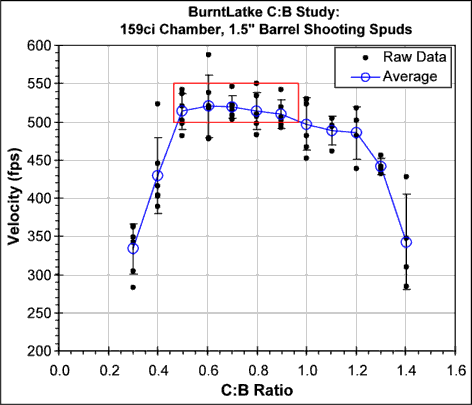D_Hall wrote:
I think I just stated above that I've been looking at Latke's data. First time, actually as combustions have never been my thing (still aren't, but I'll use whatever data I can get my hands on). In any event, everybody quotes his stuff and decrees... 0.8 is optimal!
But have they actually LOOKED at his stuff?
He uses three different types of ammo and gets three different numbers (0.6, 0.7, 0.8 all make appearances)! Yeah, 0.8 shows up more than any of the other numbers, but it only shows up for that one type of ammo.
I'm starting to think that mass and friction play large parts in all this.
If you look at Latke's data you'll also notice that even though 0.8 might be optimal for a particular gun+ammo combination there is really no difference in performance in the range of CBs from about 0.5 to 1.0. The incremental change in velocity on going from say 0.6 to 0.7 CB is not statistically significant. If it weren't for the fact that Latke collected so much data it would be impossible to say that there is any difference at all. So, 0.8 (or whatever) may well be optimal but the drop in performance in going from a CB of of 0.8 to 1.0 (shortening the lenght of the barrel by 25%) is insignificant. "Insignificant" in both a statistical and practical sense.
Another caveat to Latke's data is that he never actually measured the velocity versus projectile position. He measured the velocity versus barrel length. Others then took that data and recreated velocity versus position graphs. It is possible that the rather broad peak in the CB versus velocity graph is actually a fairly sharp CB versus velocity relationship that is muddied by the shot to shot variation in the velocity versus position, and hence optimal CB, relationship. In other words, even though he was trying to keep things constant for each shot, each shot has a unique optimal CB. The graphs just average that affect out.
I don't think there is much doubt that mass and friction (and chamber diameter vs. barrel diamter and number of sparks and a fan and ...) all have an affect on the optimal CB. The question is how much of an affect.








